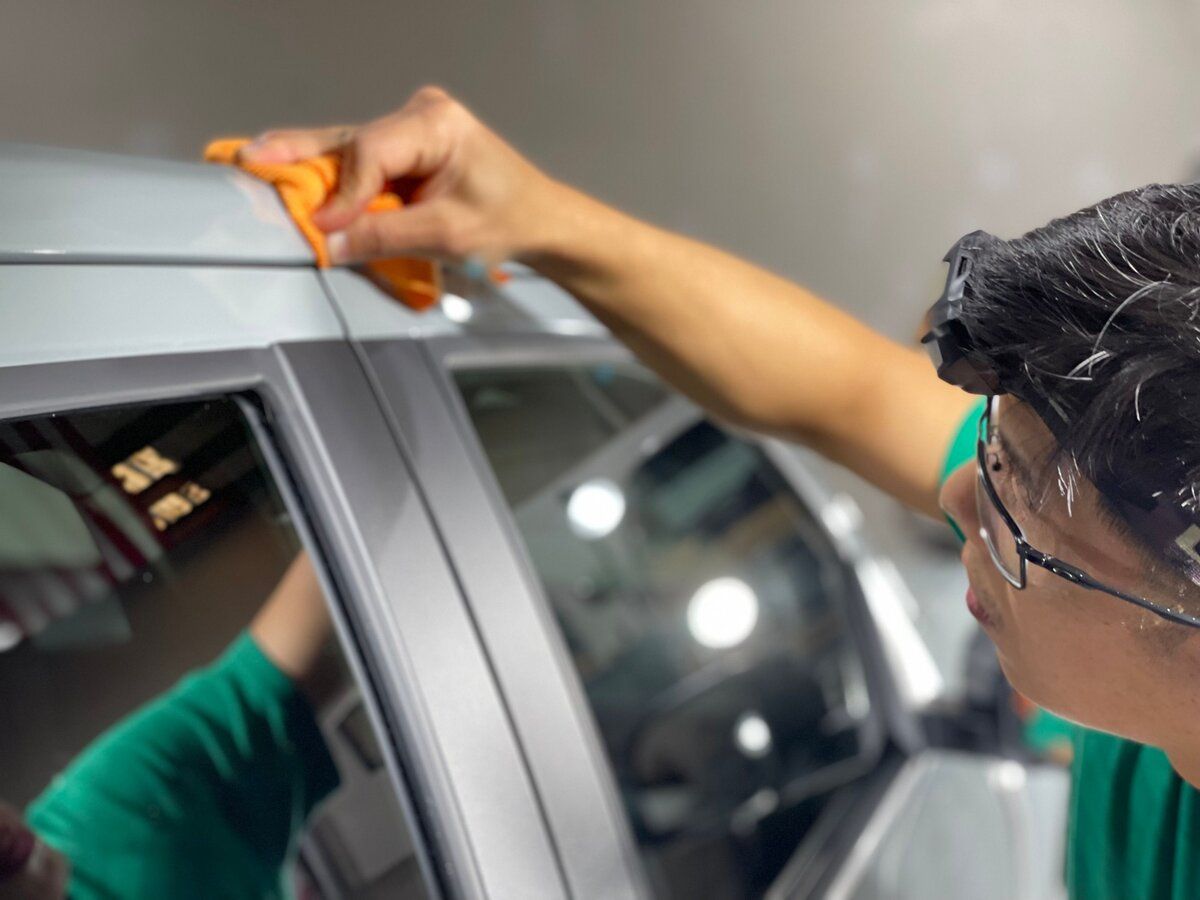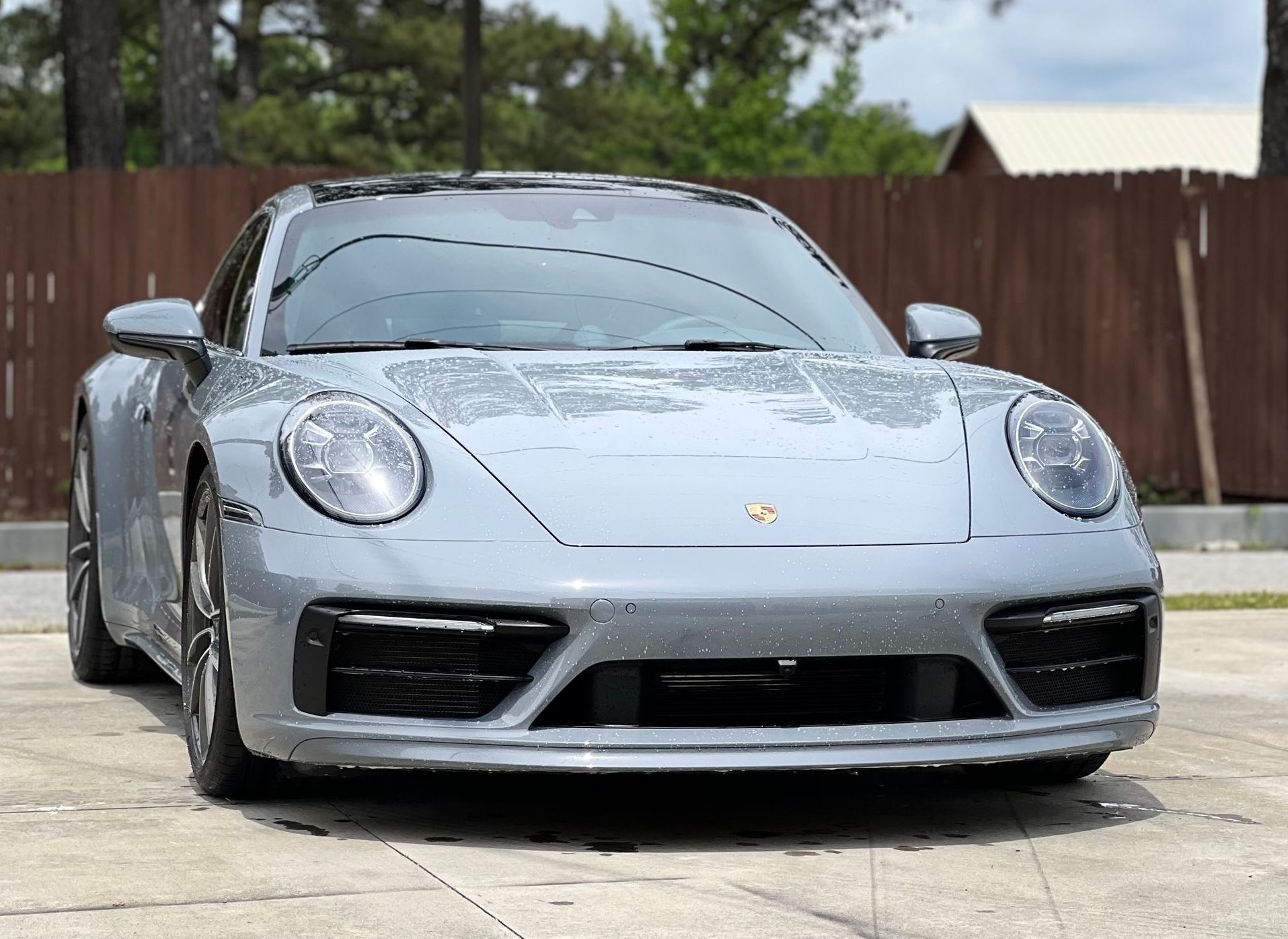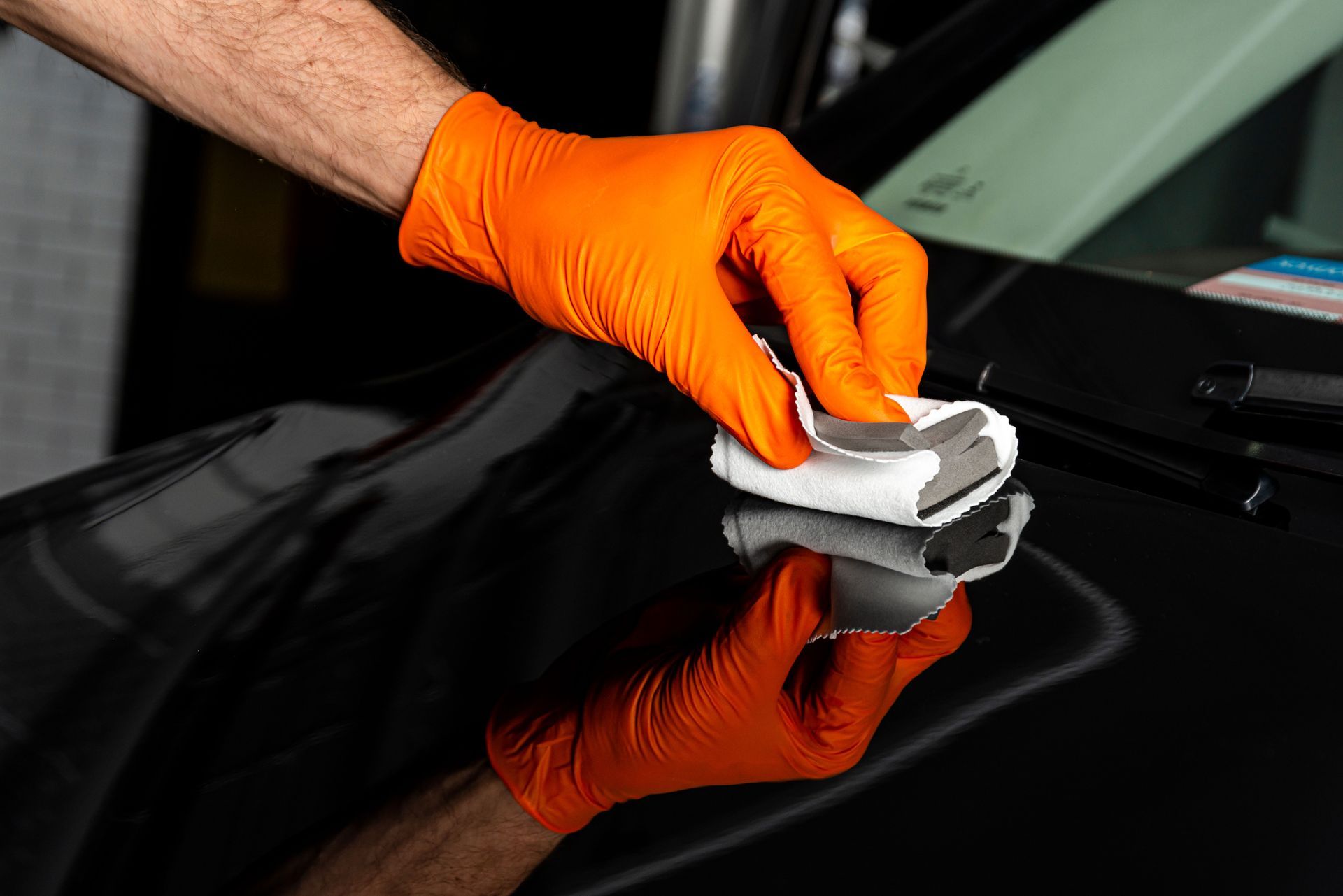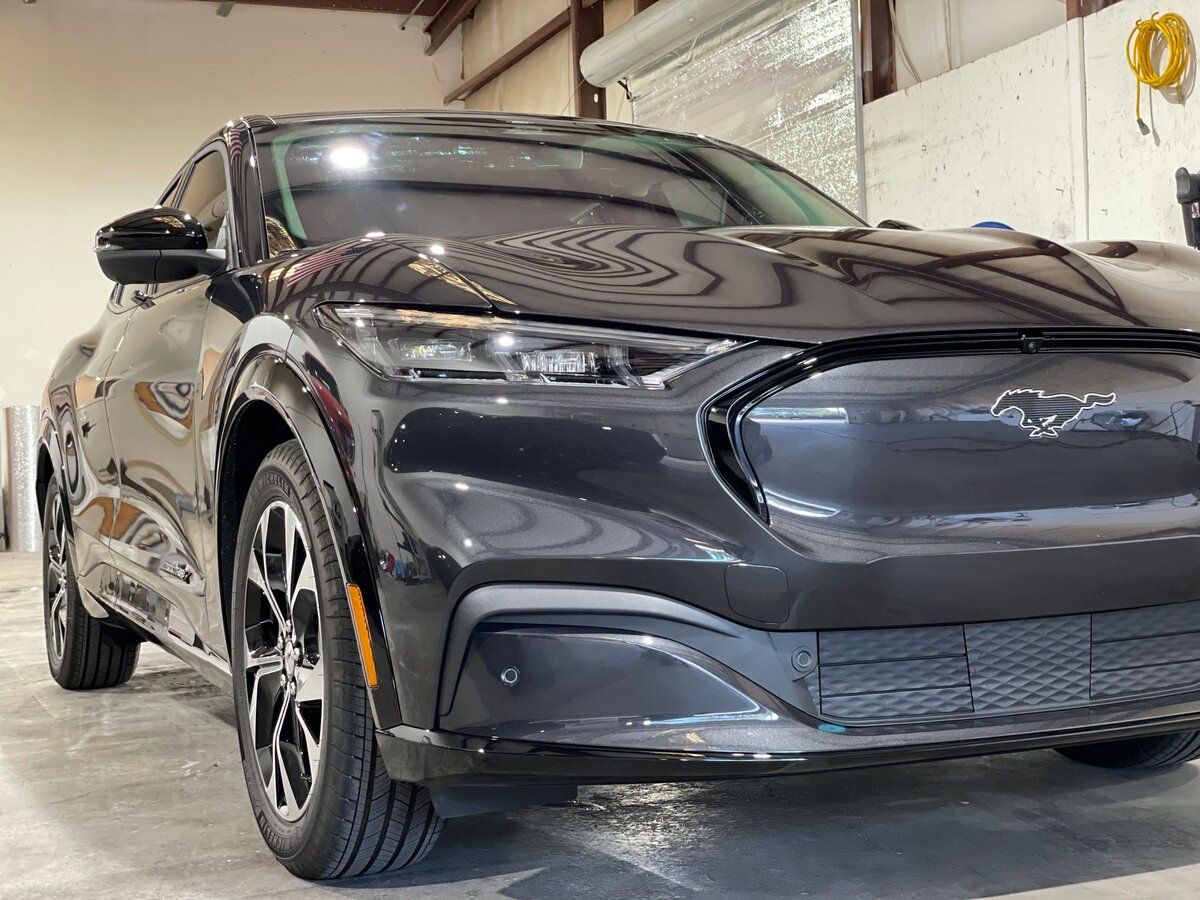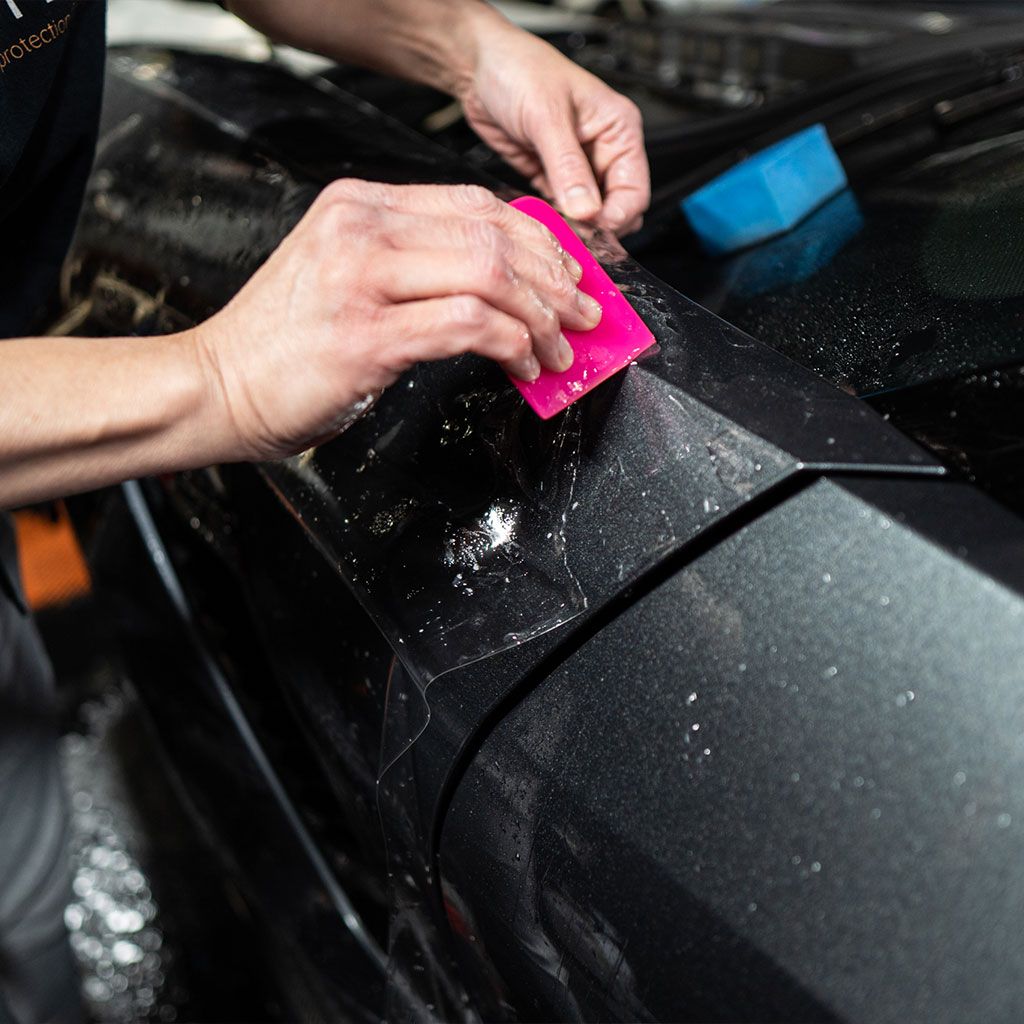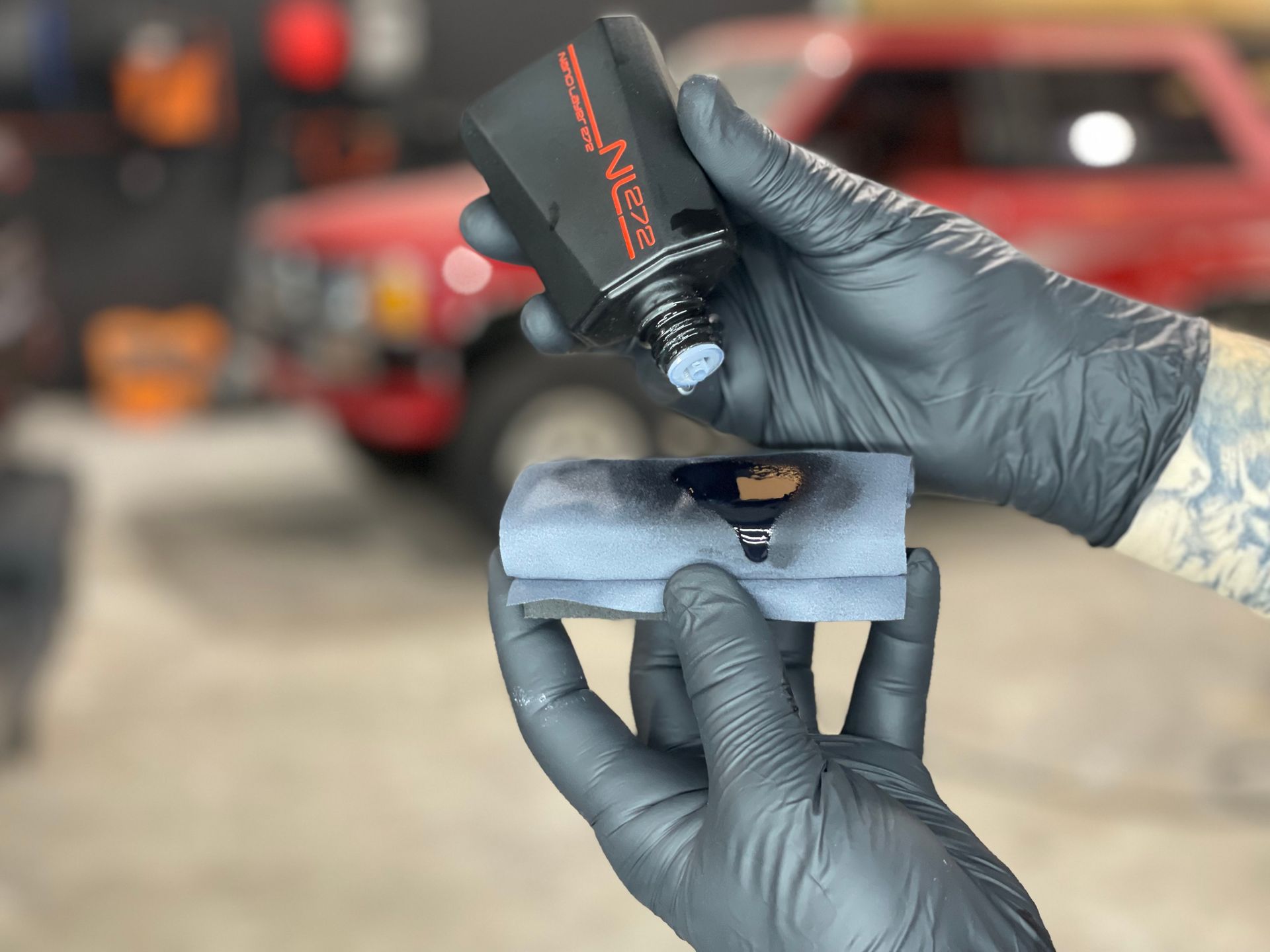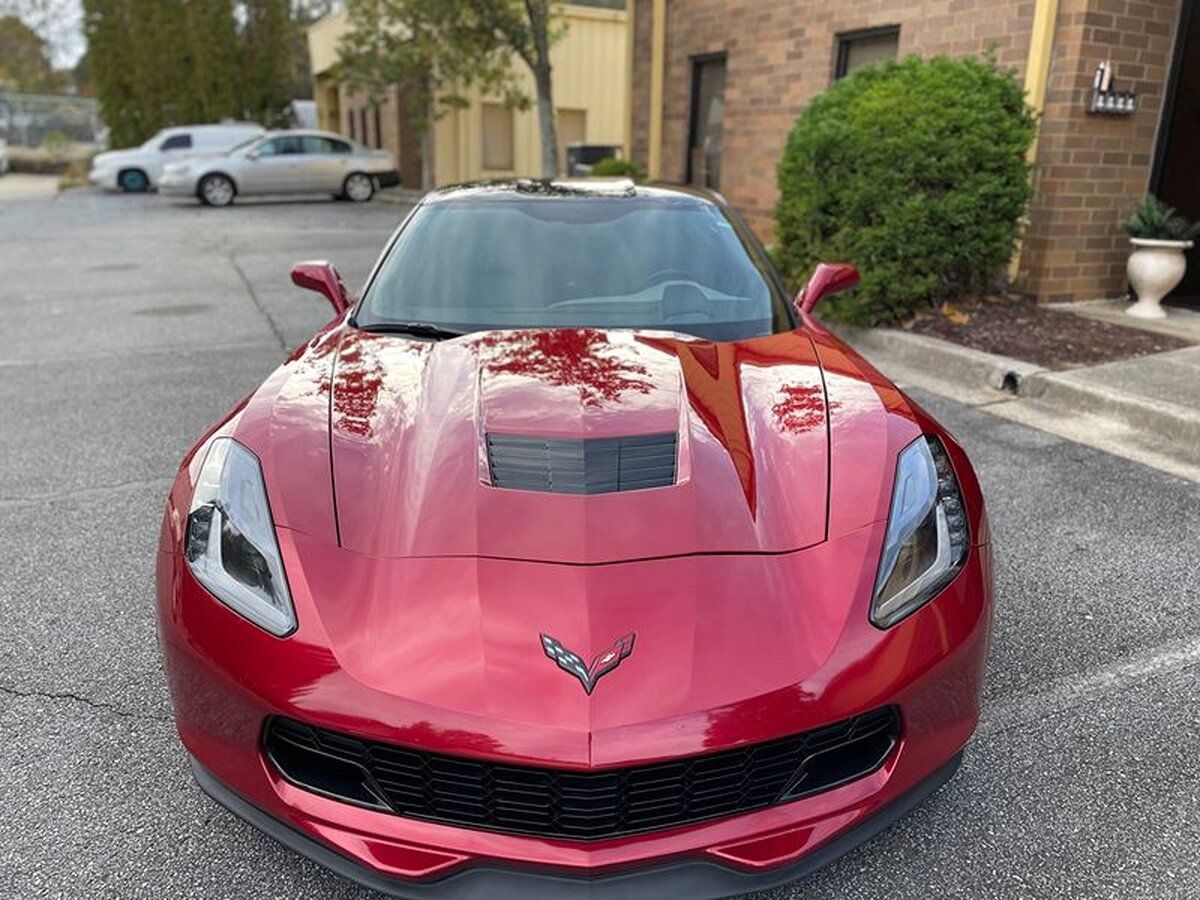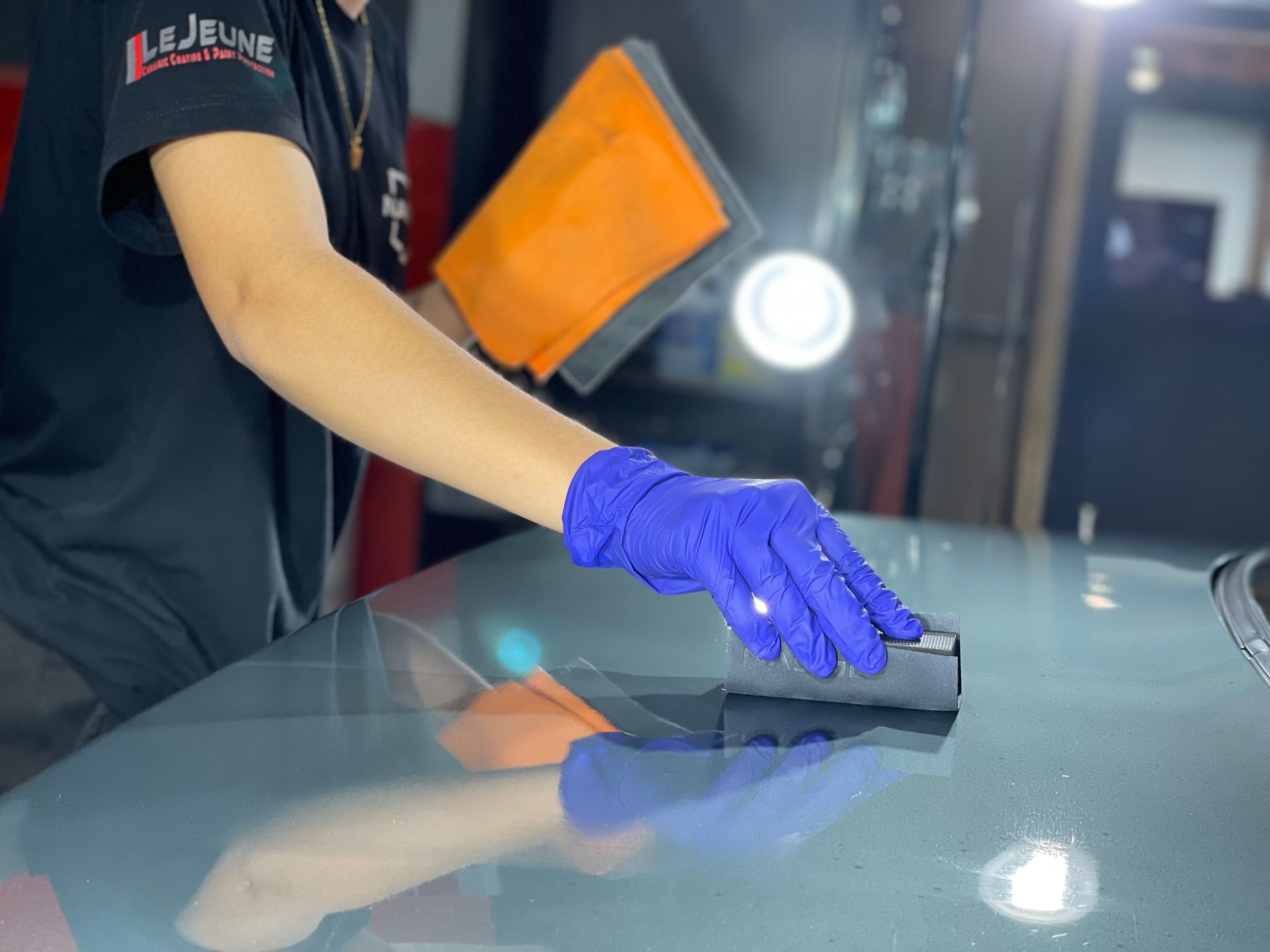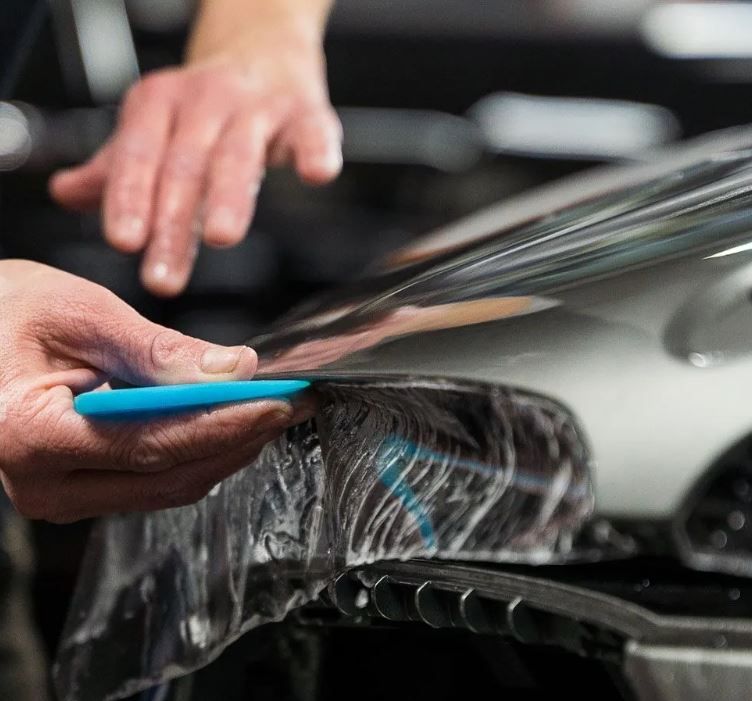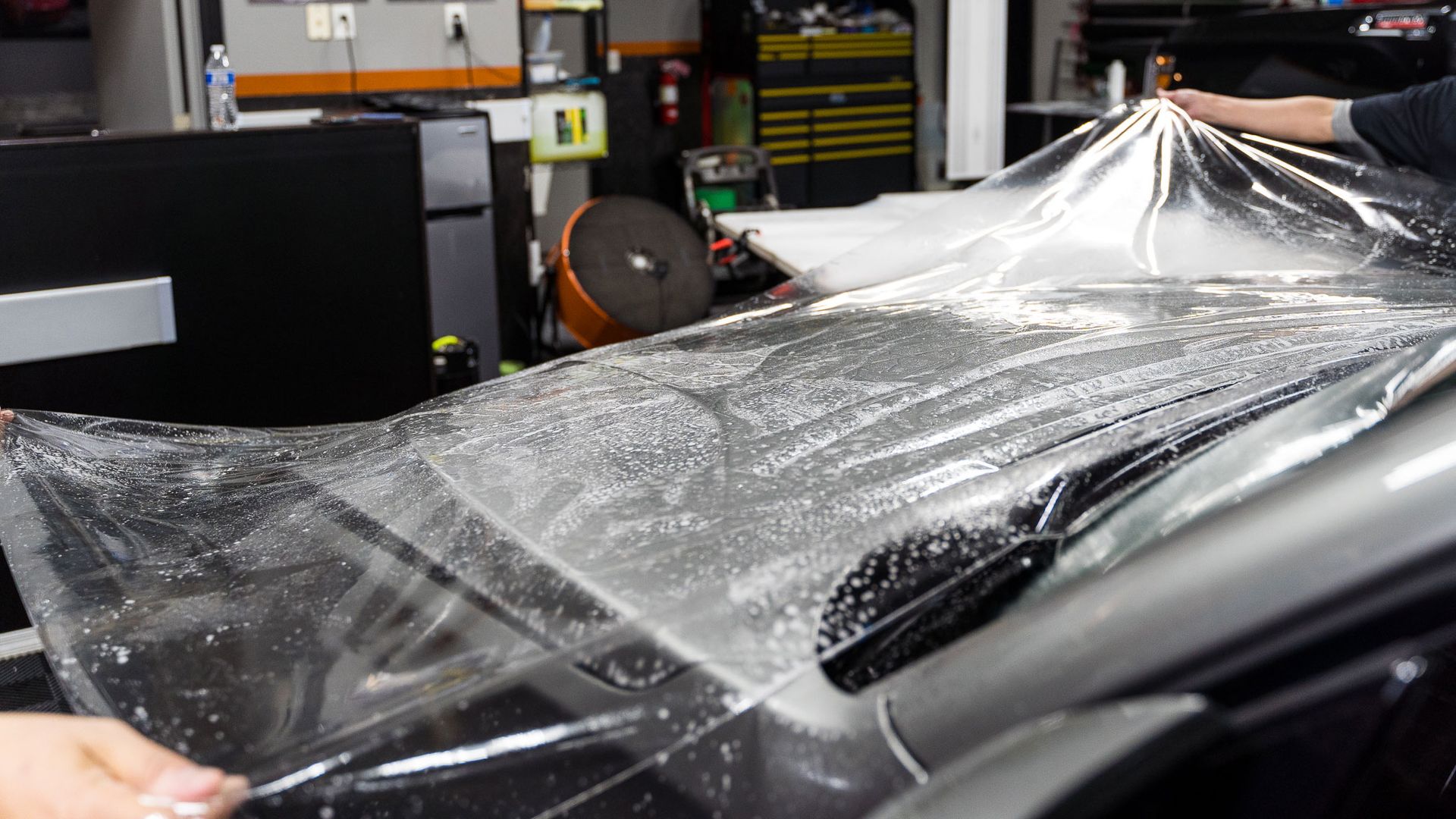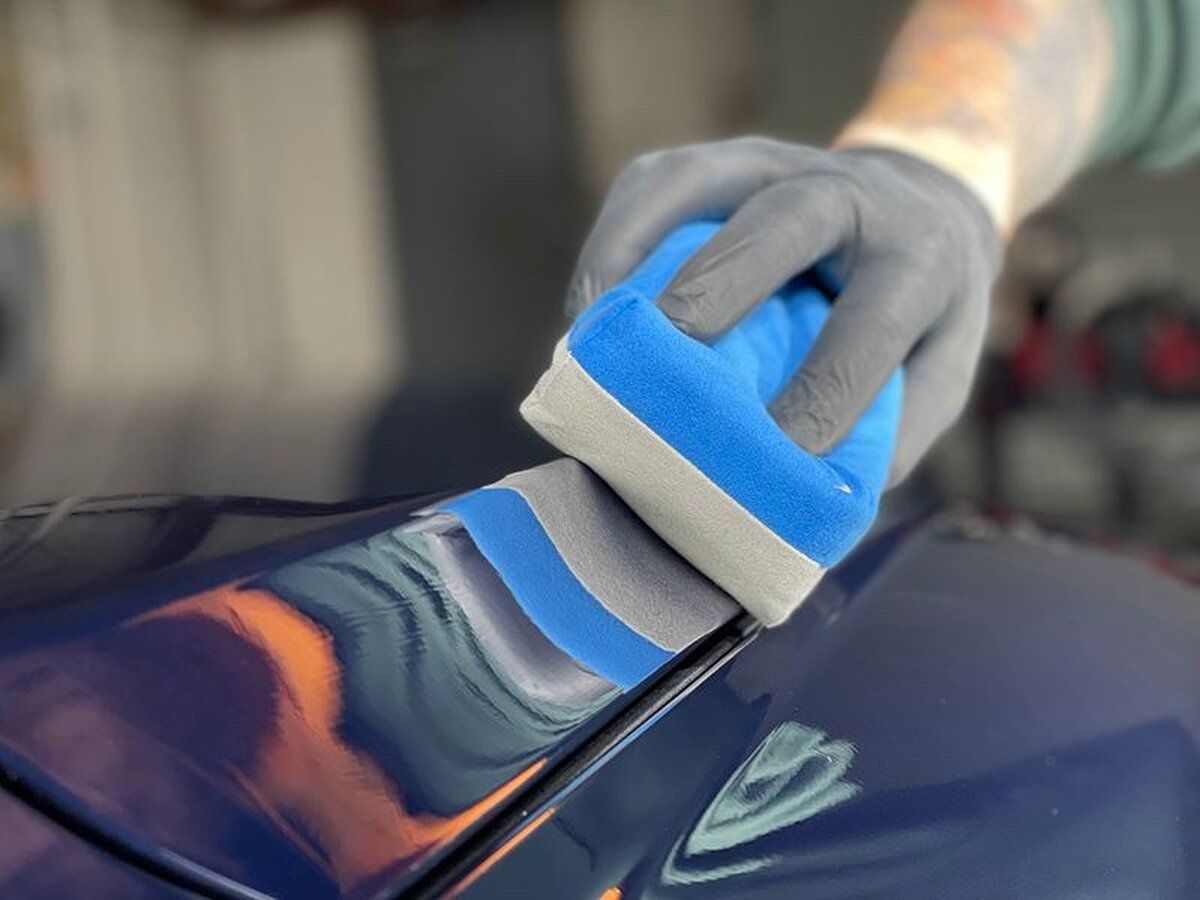Choosing the Right Professional Ceramic Coating Service: Tips for Automotive Enthusiasts
GET A QUOTECALL (770) 722-3486
For any automotive enthusiast, protecting your car’s paint is more than just routine maintenance; it's a point-of-pride. Choosing the right professional ceramic coating service can feel like navigating a maze. One wrong turn could mean investing in an ineffective coating, leaving you with less-than-stellar results. We understand: time spent and money invested should reflect in your car's dazzling finish. While it may seem tempting to go with glossy ads and grand claims, true value lies in deeper layers—like certifications from reputable manufacturers and verifiable business credentials.
When choosing a professional ceramic coating service, it is essential to consider factors such as the service provider's reputation, product quality and durability, warranty options, customer reviews, pricing, installer certification and training, ease of maintenance, level of protection, customization options, and additional detailing services offered. By evaluating these factors, you can make an informed decision that best suits your vehicle's needs.
Selecting a Reputable Ceramic Coating Provider
Finding the right professional to apply a ceramic coating to your vehicle can be challenging. You want someone who not only has the technical skills but also possesses reliability and trustworthiness. Here are some vital aspects to consider when evaluating ceramic coating providers.
- Research Provider Credentials: It's crucial to ensure that the provider is certified by reputable ceramic coating product manufacturers. Certification serves as a strong indication of their expertise and commitment to adhering to industry standards. Providers who have undergone official training by well-known manufacturers are more likely to apply the coating correctly, optimizing its benefits and longevity.
- Investigate Business History: In addition to checking certifications, it's equally important to look into the provider's experience in the industry. A lengthy track record often reflects a history of satisfied customers and honed application skills. An established provider's experience can lead to better quality application, reducing the likelihood of errors or improper application that could affect the coating's effectiveness. Don't hesitate to ask for examples of their past work or customer testimonials, as this can provide valuable insight into their level of expertise and professionalism.
- Check for Liability Insurance: Liability insurance is a key factor in the selection process. A reputable provider should have liability insurance that protects both you and them if anything goes wrong during the coating process. This insurance offers peace of mind, ensuring that you are covered in case of any unexpected issues or damages that may occur during the application.
- Seek Recommendations: One of the most effective ways to gauge the reliability and quality of a ceramic coating provider is through recommendations. Reach out to friends, family members, or car enthusiast communities for referrals. Positive word of mouth is a strong indicator of a provider's credibility and ability to deliver quality service. Hearing about others' experiences with a specific provider can offer valuable insights that may influence your decision to select the right professional for your car's ceramic coating needs.
As we explore these essential factors, it becomes clear that thorough research and consideration play a vital role in identifying a reputable ceramic coating provider. These steps can help ensure that you entrust your vehicle to capable hands, providing you with confidence in the longevity and effectiveness of the ceramic coating application.
Types of Ceramic Coating Applications
When it comes to ceramic coatings for your car, there are several options available, each with its own set of pros and cons. Let's explore the most common types to help you make an informed decision that aligns with your specific needs and preferences.
Professional-Grade Coatings
Those looking for their vehicles' best protection and longevity frequently prefer professional-grade coatings. Typically, trained technicians who are knowledgeable about the intricate ceramic coating application process apply these coatings. The allure of professional-grade coatings lies in their advanced formulation, which provides exceptional durability and resistance to environmental elements. They offer a level of protection that surpasses that of many other options on the market. These coatings are professionally applied, ensuring an even finish free from imperfections that may arise from DIY applications.
DIY Kits
On the other end of the spectrum, there are DIY ceramic coating kits available for car owners who prefer a hands-on approach to protecting their vehicle. These kits generally offer good protection, but it's essential to consider that they may lack the durability and finish achieved through professionally applied coatings. Bringing the application process into your own hands provides a sense of control over the quality and method of application. However, it's crucial to follow the manufacturer's instructions meticulously to achieve optimal results. While DIY kits offer affordability and convenience, they may not provide the same level of longevity as professional-grade applications.
Spray-On Coatings
Spray-on coatings offer a quick and budget-friendly solution for temporary protection. While they may be less durable compared to professional-grade coatings, they serve as an accessible option for car owners seeking ease of application without significant investment. These provide a relatively easy application process without the need for specialized equipment or professional expertise. These spray-on coatings can enhance the gloss and hydrophobic properties of the vehicle's surface, albeit with reduced longevity compared to other types of ceramic coatings.
Understanding the distinct characteristics and application methods associated with each type of ceramic coating empowers you to make a well-informed decision regarding the ideal choice for your vehicle's protection.
Assessing Coating Quality and Durability
When it comes to evaluating ceramic coatings, paying attention to specific key factors is crucial in determining the product's quality and longevity. Checking the hardness rating, assessing longevity claims, and examining hydrophobic properties are essential steps in ensuring that you're investing in a superior ceramic coating that will genuinely protect your vehicle.
- Hardness Rating: A 9H rating is what you should look for when assessing hardness. This indicates the level of protection against environmental contaminants. A coating with a 9H rating is highly desirable, as it signifies high durability and resistance to common forms of damage encountered by your vehicle. A 9H rating means that the coating can withstand the same level of abuse as a 9H pencil lead. It provides peace of mind knowing that your vehicle's paint is shielded from everyday wear and tear, maintaining its pristine condition for longer periods. When selecting a professional ceramic coating service, inquire about the hardness rating of the products they use and verify this against your expectations for optimal protection.
- Longevity Claims: The longevity of a ceramic coating significantly determines its overall value. Premium coatings are designed to last anywhere from 2–5 years or longer, providing extended protection for your vehicle's paintwork. Look for products with proven longevity, ideally backed by a warranty, to ensure that you get what you pay for. Real-world performance and customer reviews should back up these claims. It's not just about the numbers; it's about how the coating actually holds up over time in real driving conditions.
- Hydrophobic Properties: Another crucial feature to consider is the hydrophobic nature of the ceramic coating. A high-quality coating should exhibit excellent hydrophobic (water-repellent) properties, causing water to bead up and effortlessly roll off the surface. This not only creates an impressive visual effect but also reduces water spots and minimizes dirt accumulation on your vehicle's surface. Imagine the convenience of minimal water spots forming after rainfall and the reduced effort required to clean dirt off your car. This property not only contributes to an aesthetically pleasing finish but also makes maintenance a breeze.
By closely examining these factors, such as hardness rating, longevity claims, and hydrophobic properties, you can make informed decisions when selecting the right professional service for your vehicle’s ceramic coating needs.
Weighing Benefits and Costs
Professional ceramic coating yields numerous benefits, but it's essential to consider the initial investment and long-term savings. While the upfront cost might seem high, it often pays off in the long run by reducing the need for frequent waxing and polishing, thus saving both money and time. This translates to less maintenance, fewer visits to auto detailers, and a consistently glossy finish that lasts for years.
When assessing professional ceramic coating options, it's crucial to consider the add-on benefits offered by the service. Look for coatings that provide UV protection, enhance paint gloss, and increase resale value. These extra benefits can significantly justify the higher initial costs over time. A coating that protects your vehicle from harmful UV rays not only preserves its appearance but also safeguards the original paint job, thereby maintaining or even increasing its resale value.
Moreover, when considering different providers for ceramic coating services, requesting comprehensive quotes from multiple sources is crucial. Ensure that the price includes preparation work, the application itself, and aftercare instructions to avoid any hidden fees down the road. This detailed approach will help you compare different quotes more effectively and make an informed decision based on both the services offered and pricing transparency.
By carefully evaluating these aspects of professional ceramic coating services, you can ensure that you're making a well-informed decision that not only meets your budget requirements but also provides long-term benefits for your vehicle's appearance and protection. In weighing these benefits against costs, a careful consideration of the long-term advantages of professional ceramic coating becomes apparent, from reduced maintenance to increased resale value, making it a worthwhile investment for automotive enthusiasts looking to protect their vehicles with lasting brilliance.
Additional Detailing Services
When selecting a professional ceramic coating service, it's crucial to consider the range of additional detailing services they offer alongside the ceramic coating application. Here are some key services to keep an eye out for:
Paint Correction
Paint correction is a vital preliminary step before applying ceramic coating. It entails meticulously removing imperfections such as swirl marks, light scratches, and oxidation from the paint surface, ensuring that the ceramic coating can adhere effectively and produce a flawless finish. Paint correction isn't solely about aesthetics; it's also about restoring the protective capacity of your vehicle's paint. Be sure to inquire about this service when choosing a professional ceramic coating provider, as it significantly impacts the overall outcome and durability of the ceramic coating.
Maintenance Packages
In addition to the initial application of ceramic coating, many reputable providers offer maintenance packages. These packages typically include periodic inspections and touch-ups to ensure that the ceramic coating remains in optimal condition over time. Not only do these packages provide peace of mind for enthusiasts who want to ensure the longevity and performance of their ceramic coating, but they also reflect a commitment to ongoing customer satisfaction. When considering a professional ceramic coating service, look for those that offer comprehensive maintenance packages as part of their commitment to customer care.
Interior Detailing
An often overlooked but essential aspect of automotive care is interior detailing. While the primary focus may be on exterior aesthetics, a complete automotive detailing service should encompass both interior and exterior surfaces. This includes thorough cleaning, conditioning, and protection of the vehicle's interior components, such as upholstery, carpets, and trim. A professional ceramic coating service that offers interior detailing provides a convenient one-stop solution for both interior and exterior maintenance needs. This not only saves time for automotive enthusiasts but can also lead to bundled discounts or package deals for comprehensive care.
By exploring these additional services in depth, you can gain a better understanding of what to look for when choosing a professional ceramic coating service. Each aspect plays a crucial role in ensuring that your vehicle receives comprehensive care, both inside and out. The inclusion of these additional detailing services enhances the overall value proposition offered by professional ceramic coating providers. By evaluating these factors, automotive enthusiasts can make informed decisions that lead to lasting satisfaction with their car's appearance and protection.
Premium-Quality Ceramic Coating Service in Marietta, GA
Ensure your vehicle shines and stays protected with LeJeune Ceramic Coating & Paint Protection's
premium-quality ceramic coating service in Marietta, GA. Our expert team uses advanced techniques and top-tier products to provide a durable, high-gloss finish that defends against environmental hazards and daily wear. With LeJeune Ceramic Coating & Paint Protection, you can trust that your car will maintain its stunning appearance for years to come. Schedule your ceramic coating appointment today and give your vehicle the superior protection it needs! Call us at
(770) 722-3486 to get started!
